人教版英语必修五 Unit 1 Great scientists-Warming Up & Reading (32张ppt)
文档属性
| 名称 | 人教版英语必修五 Unit 1 Great scientists-Warming Up & Reading (32张ppt) |  | |
| 格式 | zip | ||
| 文件大小 | 1.4MB | ||
| 资源类型 | 教案 | ||
| 版本资源 | 人教版(新课程标准) | ||
| 科目 | 英语 | ||
| 更新时间 | 2020-09-20 18:21:43 | ||
图片预览



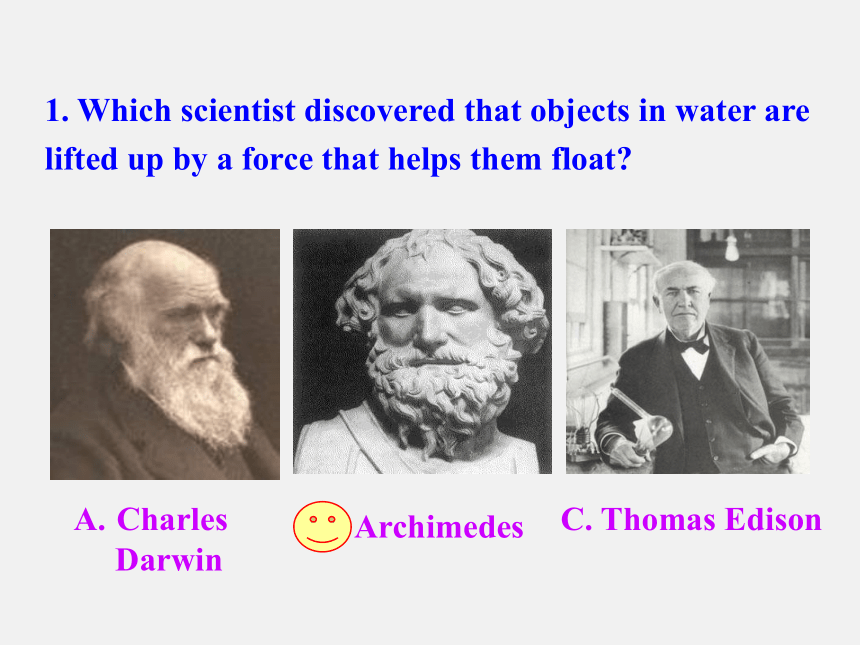

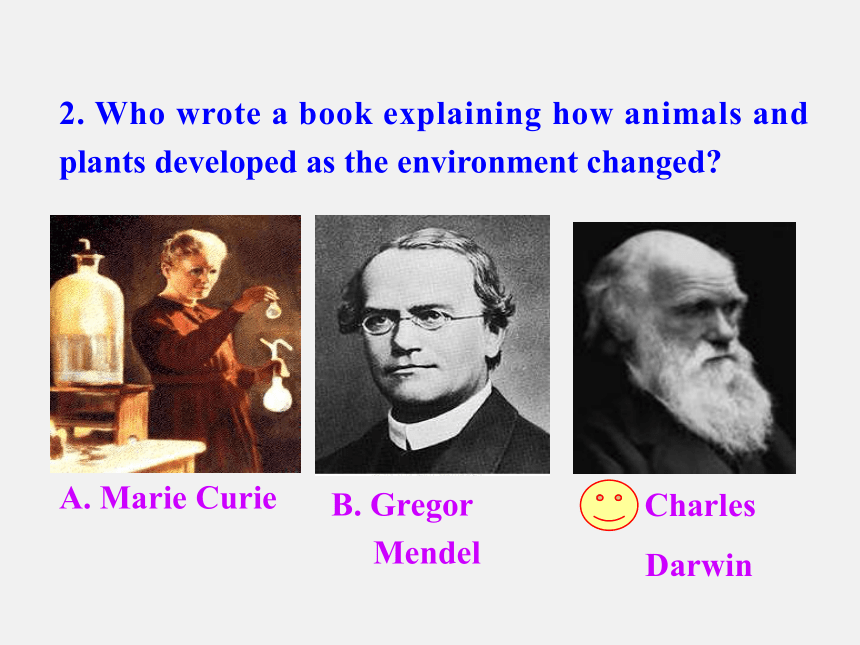
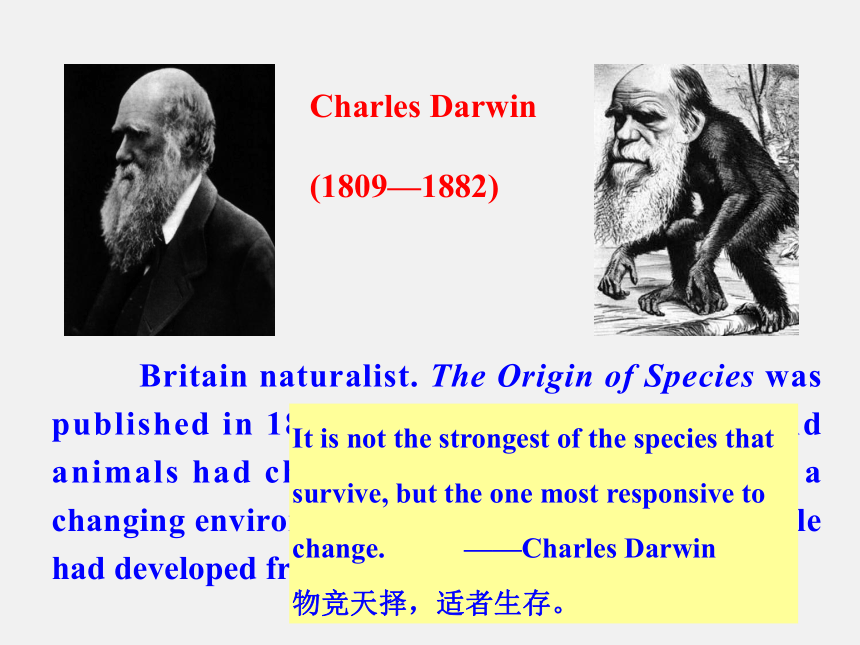
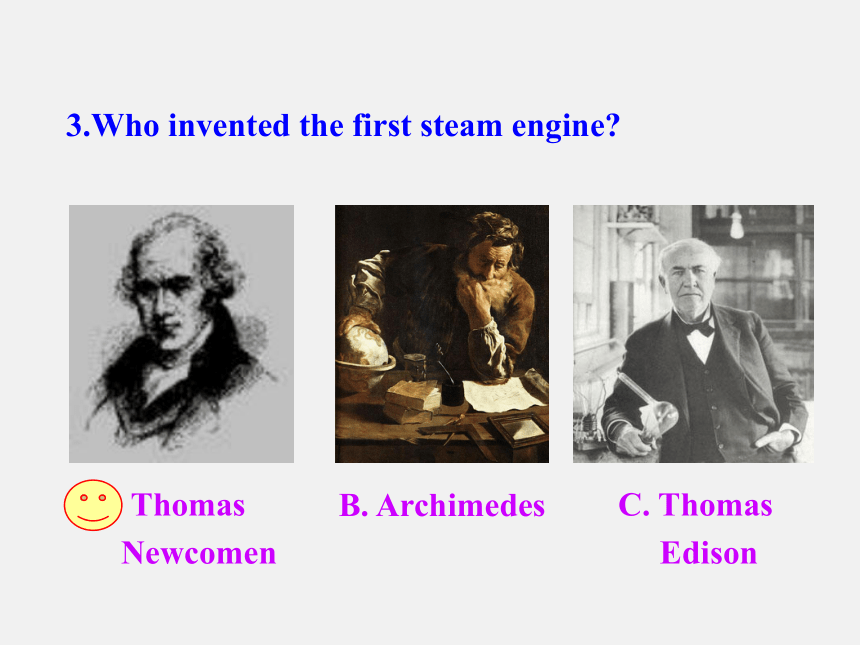
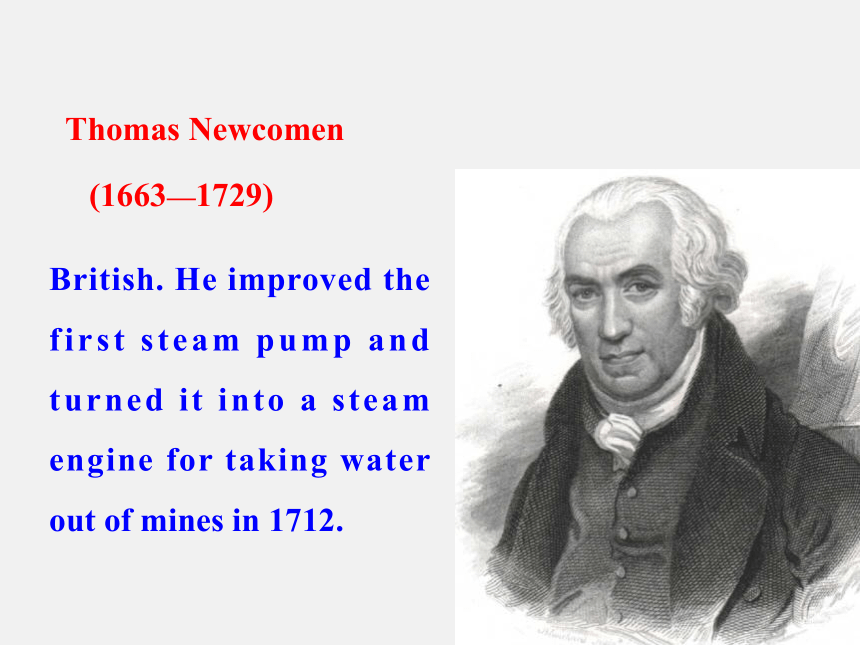
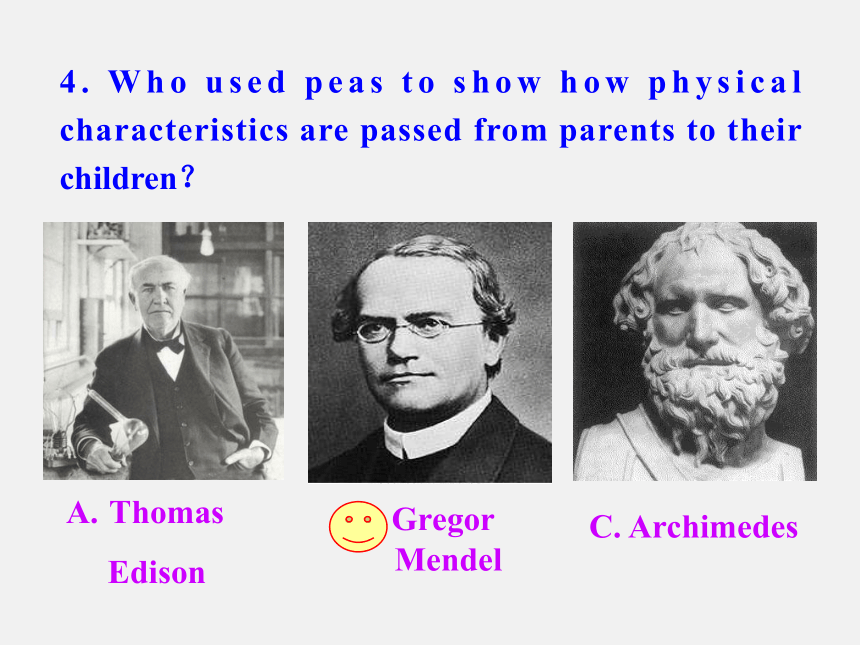
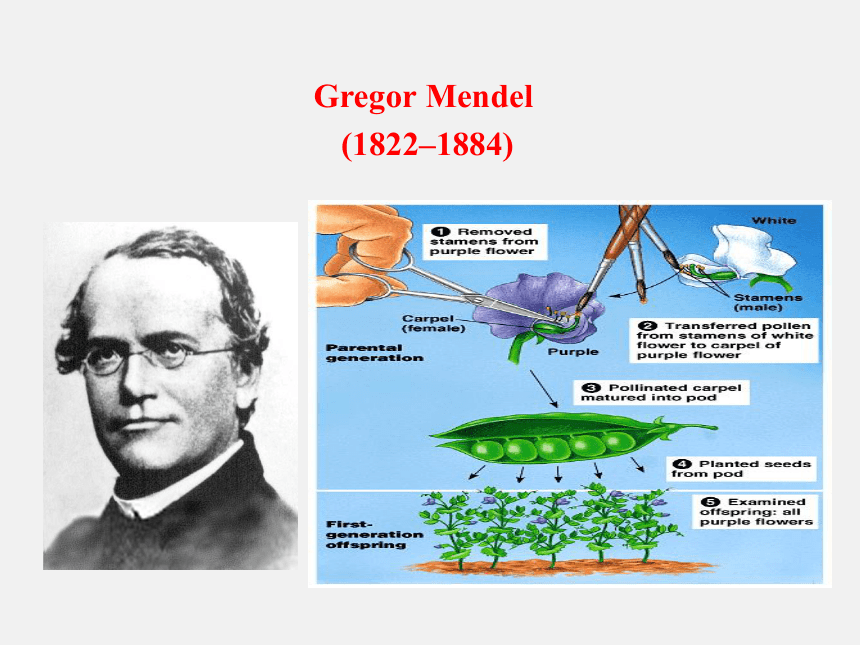

文档简介
(共32张PPT)
Unit
1
Great
scientists
Warming
Up
&
Reading
(Ⅰ)
Learn
more
about
some
great
scientists
and
their
achievements
in
the
world.
Learn
how
to
prove
a
new
idea
in
scientific
research.
Practise
reading
comprehension.
Learning
aims
Do
you
know
the
following
scientists?
The
following
is
a
quiz
and
let’s
find
out
who
knows
the
most.
Let’s
have
a
competition!
Leading-in
1.
Which
scientist
discovered
that
objects
in
water
are
lifted
up
by
a
force
that
helps
them
float?
Charles
Darwin
B.
Archimedes
C.
Thomas
Edison
Ancient
Greek.
He
was
a
mathematician.
He
found
that
if
you
put
an
object
into
water,
the
water
pushes
the
object
up.
It
rises
and
partly
floats.
Archimedes
(287
B.C.–212
B.C.)
2.
Who
wrote
a
book
explaining
how
animals
and
plants
developed
as
the
environment
changed?
A.
Marie
Curie
B.
Gregor
Mendel
C.
Charles
Darwin
Britain
naturalist.
The
Origin
of
Species
was
published
in
1859.
It
explained
how
plants
and
animals
had
changed
over
time
to
fit
in
with
a
changing
environment.
His
book
showed
that
people
had
developed
from
apes.
Charles
Darwin
(1809—1882)
It
is
not
the
strongest
of
the
species
that
survive,
but
the
one
most
responsive
to
change.
——Charles
Darwin
????
物竞天择,适者生存。????
3.Who
invented
the
first
steam
engine?
Thomas
Newcomen
B.
Archimedes
C.
Thomas
Edison
Thomas
Newcomen
(1663—1729)
British.
He
improved
the
first
steam
pump
and
turned
it
into
a
steam
engine
for
taking
water
out
of
mines
in
1712.
4.
Who
used
peas
to
show
how
physical
characteristics
are
passed
from
parents
to
their
children?
Thomas
Edison
B.
Gregor
Mendel
C.
Archimedes
Gregor
Mendel
(1822–1884)
5.
Who
invented
the
earliest
instrument
to
tell
people
where
earthquakes
happened?
A.
Charles
Darwin
B.
Zhang
Heng
C.
Watt
Zhang
Heng,
Chinese(
78–139)
He
invented
the
first
seismograph
to
indicate
in
the
direction
of
an
earthquake.
It
was
in
the
shape
of
a
cylinder
with
eight
dragon
heads
round
the
top,
each
with
a
ball
in
its
mouth.
Around
the
bottom
were
eight
frogs
directly
under
a
dragon’s
head.
When
an
earthquake
occurred,
a
ball
fell
out
of
the
dragon’s
mouth,
making
a
noise.
Do
you
know
how
to
prove
a
new
idea
in
scientific
research?
seven
stages
Discussion
Do
scientific
research
(The
process)
发现问题
提出假设
思考方法
收集资料
分析结果
寻找证据
得出结论
Find
a
problem
Make
a
question
Think
of
a
method
Collect
results
Analyse
the
results
Find
supporting
evidence
Draw
a
conclusion
THINK
WORK
FIND
SOLVE
John
Snow
British
(
1813–1858)
A
legendary(传奇的)
figure
in
the
history
of
public
health,
epidemiology(流行病学)
and
anesthesiology(麻醉学).
Reading
John
Snow
defeats
“King
Cholera”
(霍乱王)
O-157型大肠杆菌
What
is
Cholera?
It
is
a
kind
of
terrible
disease
caused
by
drinking
dirty
water
and
it
caused
a
lot
of
deaths
in
the
old
times
and
it
was
very
difficult
to
defeat.
It
begins
in
the
stomach
and
a
severe
case
can
lead
to
death
without
immediate
treatment.
And
the
victims
died
very
quickly
from
a
loss
of
liquid
after
severe
vomiting(呕吐)
and
diarrhoea(腹泻).
Do
you
know
what
this
map
was
used
for
in
1854?
1.
Who
defeats
“King
Cholera”?
2.
What
happened
in
1854?
3.
How
many
people
died
in
10
days?
4.
Why
is
there
no
death
at
No.
20
and
21
Broad
Street
as
well
as
at
No.
8
and
9
Cambridge
Street?
Task1
Fast
reading
Read
the
text
and
answer
the
following
questions:
1.
Who
defeats
“King
Cholera”?
2.
What
happened
in
1854?
3.
How
many
people
died
in
10
days?
4.
Why
is
there
no
death
at
No.
20
and
21
Broad
Street
as
well
as
at
No.
8
and
9
Cambridge
Street?
The
disease
of
cholera
hit
London.
Because
these
families
had
not
drunk
the
water
from
the
Broad
Street
pump.
John
Snow
.
More
than
500.
John
Snow
was
an_______
doctor
in
London
who
_________
Queen
Victoria
as
her
personal
__________.
He
thought
about
helping
ordinary
people
_________
to
cholera.
Though
the
cause
and
the
_____
of
it
were
unknown,
he
wanted
to
face
the
_________
and
solve
this
problem.
expert
attended
physician
exposed
cure
challenge
Task
2
Careful
reading
Paragraph
1
Fill
in
the
blanks.
Paragraph
2
Make
up
a
question:
Which
theory
to
believe
in?
Idea
1:
Cholera
multiplied
in
the
air
without
reason.
A
cloud
of
dangerous
gas
floated
around
until
it
found
its
victims.
Idea
2:
People
absorbed
this
disease
into
their
bodies
with
their
meals.
Paragraphs
3&4
1.
John
Snow
finally
proved
the
theory
he
believed
by
________.
A.
gathering
information
with
the
help
of
a
map
B.
looking
into
the
source
of
the
water
for
Broad
Street
and
Cambridge
Street
C.
separating
those
who
suffered
cholera
from
those
who
didn’t
D.
both
A
and
B
What
did
he
do
with
the
results
of
his
enquiry?
What
valuable
clue
did
he
get
about
the
cause
of
the
disease?
What
might
be
the
cause?
He
marked
on
a
map
the
exact
places
where
all
the
dead
people
had
lived.
Many
of
the
deaths
were
near
the
water
pump
in
Broad
Street,
while
some
houses
had
had
no
deaths.
It
seemed
that
the
water
was
to
blame
for
cholera.
Why
did
he
tell
people
to
remove
the
handle
from
the
pump?
2.What
happened
after
the
handle
was
removed?
Because
the
source
of
the
water
for
these
two
streets
was
polluted,
and
the
handle
could
not
be
used.
The
disease
slowed
down.
Paragraph
5
①The
source
of
all
the
water
supplies
should
be
examined.
②The
water
companies
were
also
instructed
not
to
expose
people
to
polluted
water
any
more.
Two
other
deaths
in
another
part
of
London
were
linked
to
the
Broad
Street
outbreak.
Paragraph
6
What
’s
the
extra
evidence?
Paragraph
7
What
are
John
Snow’s
suggestions?
John
Snow
Defeats
“King
Cholera”
Steps
What/How?
1.
Find
a
problem
2.
Make
a
question
3.Think
of
a
method
What
caused
cholera?
Which
theory
was
correct?
Gather
information
on
those
who
were
ill
or
died
and
where
they
got
their
water.
Task
3
Mind
Map
of
the
Text
7.
Draw
a
conclusion
6.
Find
supporting
evidence
Analyse
the
water
to
see
if
that
was
the
cause
of
the
illness.
Find
other
evidence
to
make
sure
the
conclusion.
The
water
was
to
blame.
The
source
of
all
the
water
supplies
should
be
examined.
4.
Collect
results
Mark
information
on
a
map
to
find
out
where
people
died
or
did
not
die.
5.
Analyse
the
results
Homework
What
should
we
pay
attention
to
in
our
daily
life
to
prevent
ourselves
from
getting
infected
with
all
these
infectious
diseases?
Genius
is
one
percent
inspiration
and
ninety-nine
percent
perspiration.
天才来自百分之一的灵感和百分之九十九的汗水。
Unit
1
Great
scientists
Warming
Up
&
Reading
(Ⅰ)
Learn
more
about
some
great
scientists
and
their
achievements
in
the
world.
Learn
how
to
prove
a
new
idea
in
scientific
research.
Practise
reading
comprehension.
Learning
aims
Do
you
know
the
following
scientists?
The
following
is
a
quiz
and
let’s
find
out
who
knows
the
most.
Let’s
have
a
competition!
Leading-in
1.
Which
scientist
discovered
that
objects
in
water
are
lifted
up
by
a
force
that
helps
them
float?
Charles
Darwin
B.
Archimedes
C.
Thomas
Edison
Ancient
Greek.
He
was
a
mathematician.
He
found
that
if
you
put
an
object
into
water,
the
water
pushes
the
object
up.
It
rises
and
partly
floats.
Archimedes
(287
B.C.–212
B.C.)
2.
Who
wrote
a
book
explaining
how
animals
and
plants
developed
as
the
environment
changed?
A.
Marie
Curie
B.
Gregor
Mendel
C.
Charles
Darwin
Britain
naturalist.
The
Origin
of
Species
was
published
in
1859.
It
explained
how
plants
and
animals
had
changed
over
time
to
fit
in
with
a
changing
environment.
His
book
showed
that
people
had
developed
from
apes.
Charles
Darwin
(1809—1882)
It
is
not
the
strongest
of
the
species
that
survive,
but
the
one
most
responsive
to
change.
——Charles
Darwin
????
物竞天择,适者生存。????
3.Who
invented
the
first
steam
engine?
Thomas
Newcomen
B.
Archimedes
C.
Thomas
Edison
Thomas
Newcomen
(1663—1729)
British.
He
improved
the
first
steam
pump
and
turned
it
into
a
steam
engine
for
taking
water
out
of
mines
in
1712.
4.
Who
used
peas
to
show
how
physical
characteristics
are
passed
from
parents
to
their
children?
Thomas
Edison
B.
Gregor
Mendel
C.
Archimedes
Gregor
Mendel
(1822–1884)
5.
Who
invented
the
earliest
instrument
to
tell
people
where
earthquakes
happened?
A.
Charles
Darwin
B.
Zhang
Heng
C.
Watt
Zhang
Heng,
Chinese(
78–139)
He
invented
the
first
seismograph
to
indicate
in
the
direction
of
an
earthquake.
It
was
in
the
shape
of
a
cylinder
with
eight
dragon
heads
round
the
top,
each
with
a
ball
in
its
mouth.
Around
the
bottom
were
eight
frogs
directly
under
a
dragon’s
head.
When
an
earthquake
occurred,
a
ball
fell
out
of
the
dragon’s
mouth,
making
a
noise.
Do
you
know
how
to
prove
a
new
idea
in
scientific
research?
seven
stages
Discussion
Do
scientific
research
(The
process)
发现问题
提出假设
思考方法
收集资料
分析结果
寻找证据
得出结论
Find
a
problem
Make
a
question
Think
of
a
method
Collect
results
Analyse
the
results
Find
supporting
evidence
Draw
a
conclusion
THINK
WORK
FIND
SOLVE
John
Snow
British
(
1813–1858)
A
legendary(传奇的)
figure
in
the
history
of
public
health,
epidemiology(流行病学)
and
anesthesiology(麻醉学).
Reading
John
Snow
defeats
“King
Cholera”
(霍乱王)
O-157型大肠杆菌
What
is
Cholera?
It
is
a
kind
of
terrible
disease
caused
by
drinking
dirty
water
and
it
caused
a
lot
of
deaths
in
the
old
times
and
it
was
very
difficult
to
defeat.
It
begins
in
the
stomach
and
a
severe
case
can
lead
to
death
without
immediate
treatment.
And
the
victims
died
very
quickly
from
a
loss
of
liquid
after
severe
vomiting(呕吐)
and
diarrhoea(腹泻).
Do
you
know
what
this
map
was
used
for
in
1854?
1.
Who
defeats
“King
Cholera”?
2.
What
happened
in
1854?
3.
How
many
people
died
in
10
days?
4.
Why
is
there
no
death
at
No.
20
and
21
Broad
Street
as
well
as
at
No.
8
and
9
Cambridge
Street?
Task1
Fast
reading
Read
the
text
and
answer
the
following
questions:
1.
Who
defeats
“King
Cholera”?
2.
What
happened
in
1854?
3.
How
many
people
died
in
10
days?
4.
Why
is
there
no
death
at
No.
20
and
21
Broad
Street
as
well
as
at
No.
8
and
9
Cambridge
Street?
The
disease
of
cholera
hit
London.
Because
these
families
had
not
drunk
the
water
from
the
Broad
Street
pump.
John
Snow
.
More
than
500.
John
Snow
was
an_______
doctor
in
London
who
_________
Queen
Victoria
as
her
personal
__________.
He
thought
about
helping
ordinary
people
_________
to
cholera.
Though
the
cause
and
the
_____
of
it
were
unknown,
he
wanted
to
face
the
_________
and
solve
this
problem.
expert
attended
physician
exposed
cure
challenge
Task
2
Careful
reading
Paragraph
1
Fill
in
the
blanks.
Paragraph
2
Make
up
a
question:
Which
theory
to
believe
in?
Idea
1:
Cholera
multiplied
in
the
air
without
reason.
A
cloud
of
dangerous
gas
floated
around
until
it
found
its
victims.
Idea
2:
People
absorbed
this
disease
into
their
bodies
with
their
meals.
Paragraphs
3&4
1.
John
Snow
finally
proved
the
theory
he
believed
by
________.
A.
gathering
information
with
the
help
of
a
map
B.
looking
into
the
source
of
the
water
for
Broad
Street
and
Cambridge
Street
C.
separating
those
who
suffered
cholera
from
those
who
didn’t
D.
both
A
and
B
What
did
he
do
with
the
results
of
his
enquiry?
What
valuable
clue
did
he
get
about
the
cause
of
the
disease?
What
might
be
the
cause?
He
marked
on
a
map
the
exact
places
where
all
the
dead
people
had
lived.
Many
of
the
deaths
were
near
the
water
pump
in
Broad
Street,
while
some
houses
had
had
no
deaths.
It
seemed
that
the
water
was
to
blame
for
cholera.
Why
did
he
tell
people
to
remove
the
handle
from
the
pump?
2.What
happened
after
the
handle
was
removed?
Because
the
source
of
the
water
for
these
two
streets
was
polluted,
and
the
handle
could
not
be
used.
The
disease
slowed
down.
Paragraph
5
①The
source
of
all
the
water
supplies
should
be
examined.
②The
water
companies
were
also
instructed
not
to
expose
people
to
polluted
water
any
more.
Two
other
deaths
in
another
part
of
London
were
linked
to
the
Broad
Street
outbreak.
Paragraph
6
What
’s
the
extra
evidence?
Paragraph
7
What
are
John
Snow’s
suggestions?
John
Snow
Defeats
“King
Cholera”
Steps
What/How?
1.
Find
a
problem
2.
Make
a
question
3.Think
of
a
method
What
caused
cholera?
Which
theory
was
correct?
Gather
information
on
those
who
were
ill
or
died
and
where
they
got
their
water.
Task
3
Mind
Map
of
the
Text
7.
Draw
a
conclusion
6.
Find
supporting
evidence
Analyse
the
water
to
see
if
that
was
the
cause
of
the
illness.
Find
other
evidence
to
make
sure
the
conclusion.
The
water
was
to
blame.
The
source
of
all
the
water
supplies
should
be
examined.
4.
Collect
results
Mark
information
on
a
map
to
find
out
where
people
died
or
did
not
die.
5.
Analyse
the
results
Homework
What
should
we
pay
attention
to
in
our
daily
life
to
prevent
ourselves
from
getting
infected
with
all
these
infectious
diseases?
Genius
is
one
percent
inspiration
and
ninety-nine
percent
perspiration.
天才来自百分之一的灵感和百分之九十九的汗水。
